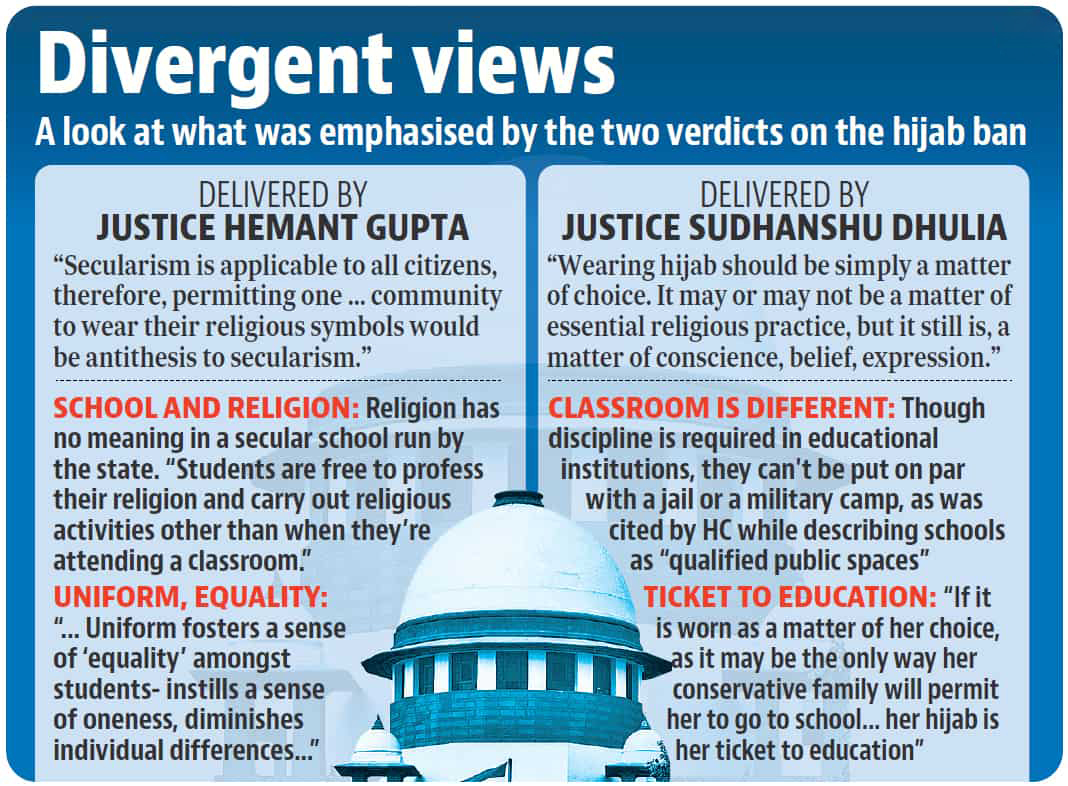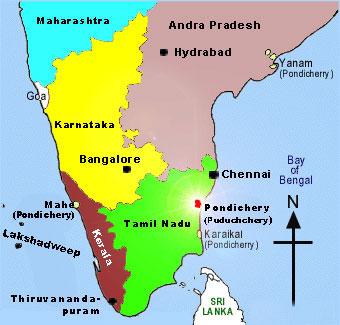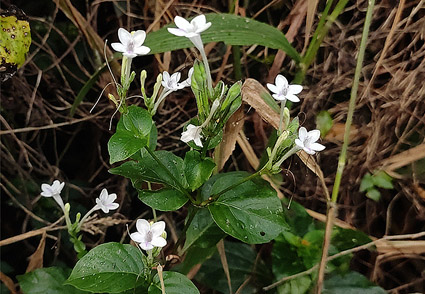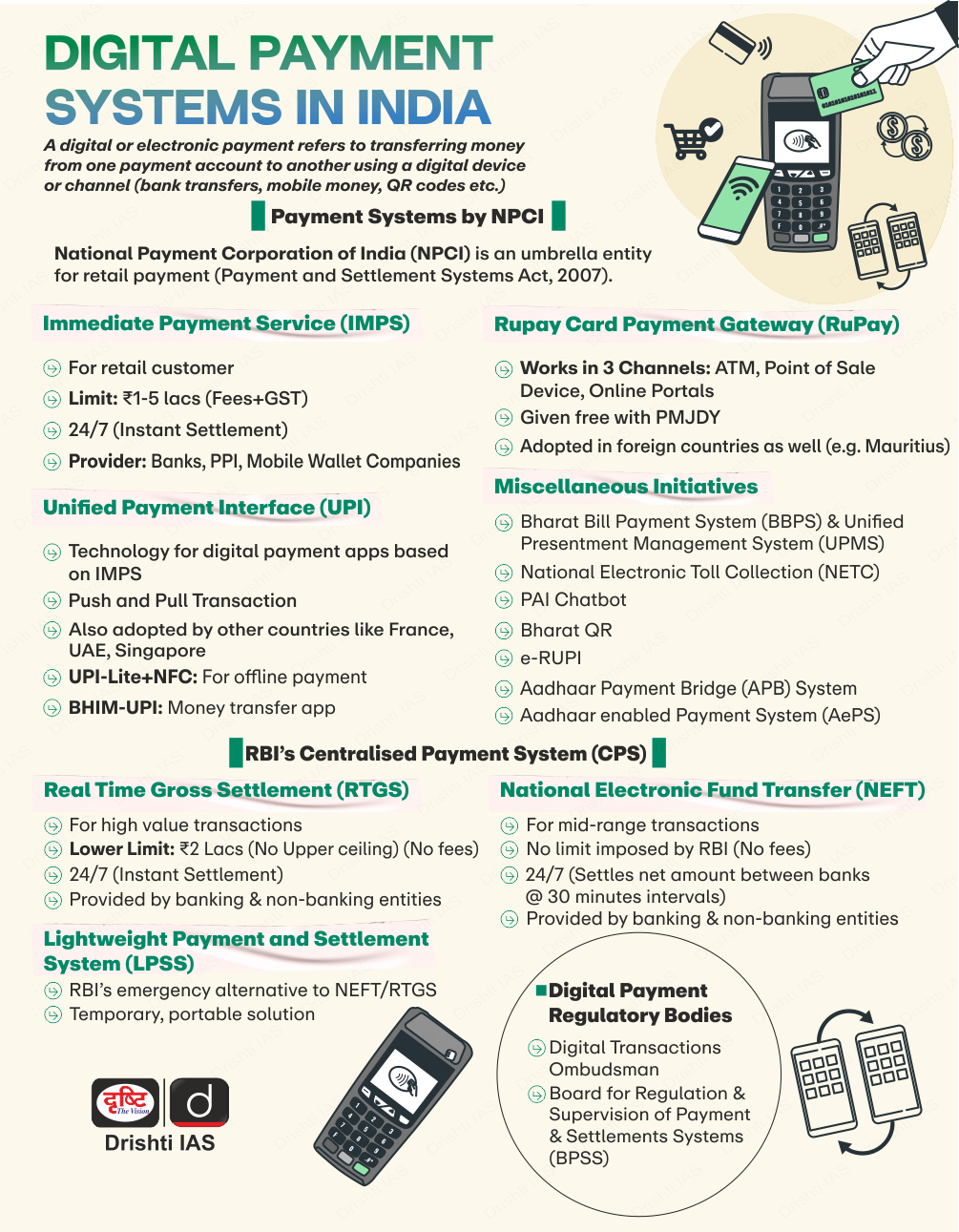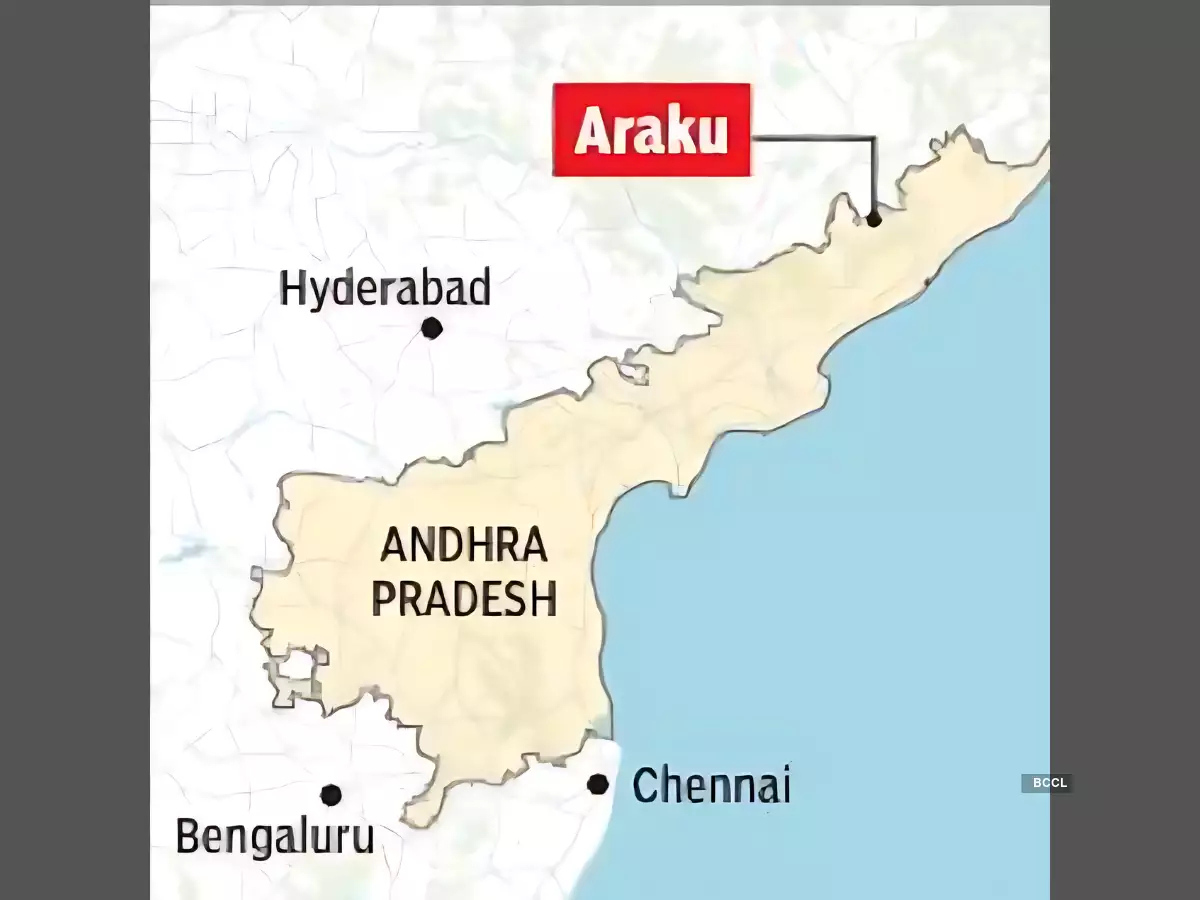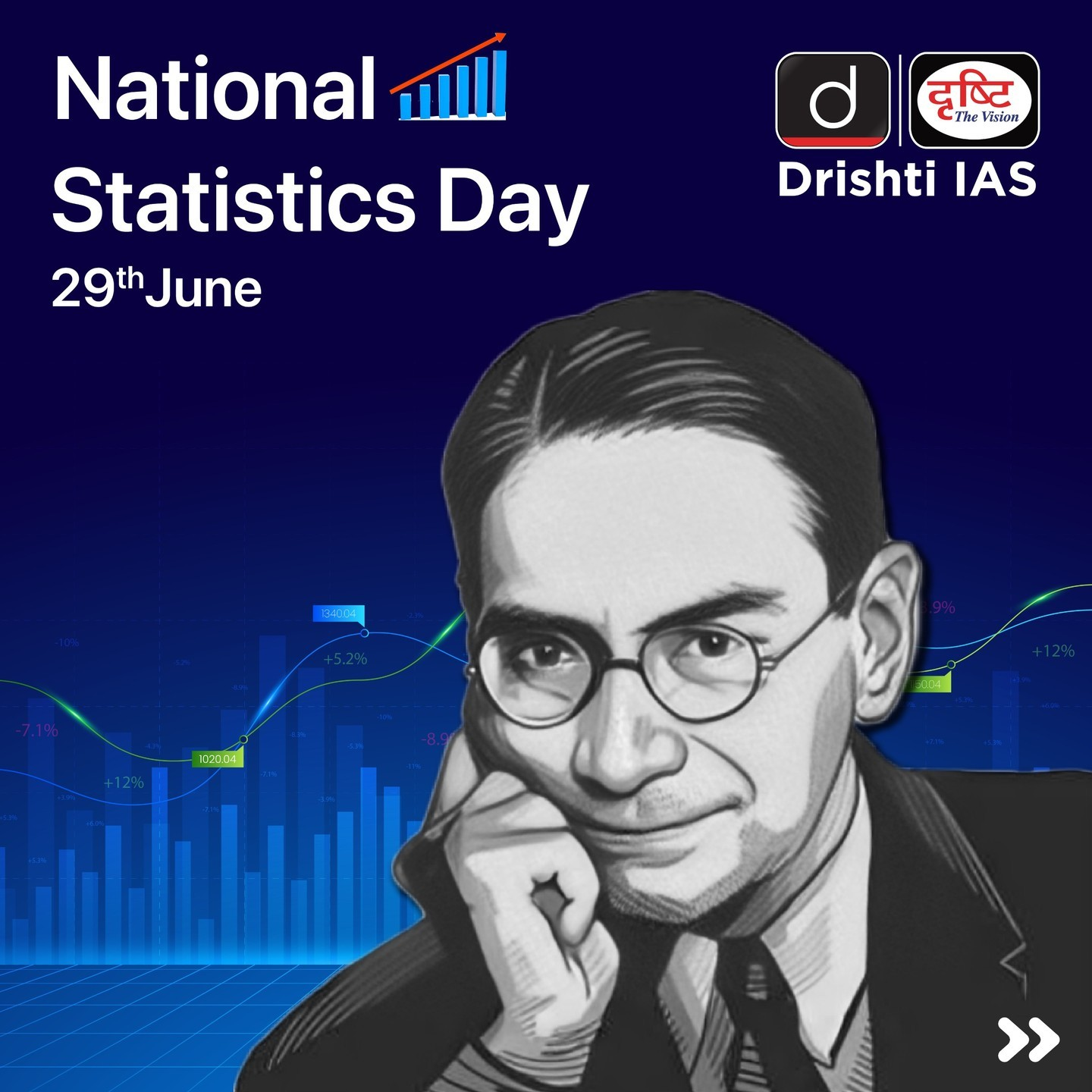Reorganisation of States in India
Read More...Statehood Demand, Jammu and Kashmir Reorganisation Act, 2019
Simla Agreement 1972
For Prelims: Simla Agreement, 1971 Indo-Pakistani War, Kashmir issue, Line of Control (LoC), Nuclear tests, Kargil War, Article 370,
For Mains: India-Pakistan relations, Significance of Simla agreement
Why in News?
Recently, the 52nd anniversary of the Simla Agreement, signed on 2nd July 1972 by then Prime Minister of India and Pakistan was observed.
What is Simla Agreement?
- Origins and Context:
- Post-1971 War Dynamics: The agreement was a direct consequence of the 1971 Indo-Pakistani War, which resulted in the independence of Bangladesh (formerly East Pakistan).
- India's military intervention played a crucial role in this conflict, significantly altering the geopolitical landscape of South Asia.
- Key Negotiators: Prime Minister Indira Gandhi and Pakistan’s President Zulfikar Ali Bhutto.
- Post-1971 War Dynamics: The agreement was a direct consequence of the 1971 Indo-Pakistani War, which resulted in the independence of Bangladesh (formerly East Pakistan).
- Objectives of the Simla Agreement: India had several key objectives at Simla.
- Resolution of Kashmir Issue: India aimed for a bilateral resolution to the Kashmir dispute, restraining Pakistan from internationalising the issue.
- Normalisation of Relations: Hoping for improved relations with Pakistan based on the new regional power balance.
- Avoiding Humiliation of Pakistan: India chose not to press for turning the ceasefire line into a permanent boundary to prevent further resentment and potential revanchism in Pakistan.
- Key Provisions:
- Conflict Resolution and Bilateralism: The agreement emphasised resolving all issues between India and Pakistan through peaceful means, primarily through bilateral negotiations. It aimed to put an end to the conflict and confrontation that had marred their relations.
- Status of Kashmir: One of the most contentious issues addressed was the Line of Control (LoC) in Kashmir, established after the 1971 war.
- Both sides agreed to respect this line without prejudice to their respective claims and to refrain from altering its status unilaterally.
- Withdrawal of Forces: It stipulated the withdrawal of forces to their respective sides of the international border, marking a significant step towards de-escalation.
- Future Diplomacy: The agreement also laid down provisions for future meetings between the heads of both governments and ongoing discussions to establish durable peace, normalise relations, and address humanitarian issues like the repatriation of prisoners of war.
- Significance:
-
Geopolitical Tensions: The agreement remains relevant today as the Kashmir issue and broader Indo-Pak relations continue to be a flashpoint in South Asian geopolitics.
-
Legal and Diplomatic Framework: It provides a legal framework for future discussions and negotiations between the two countries, despite its limitations and differing interpretations.
-
-
Criticism:
-
Unfulfilled Potential: The Simla Agreement fell short of its intended goals of fostering lasting peace and cooperation between India and Pakistan. Deep-seated mistrust and historical grievances continue to hinder progress.
-
Nuclearisation and Strategic Shifts: Both countries conducted nuclear tests post-1998, significantly altering the strategic calculus. This nuclear capability has led to a deterrence-based stability rendering Simla agreement less relevant.
- Long-term Impact: Despite its intentions, the Simla Agreement did not lead to a sustained peace process or normalisation of relations between India and Pakistan.
- International Perspective: The international community generally respects the Simla Agreement's bilateral approach to resolving issues between India and Pakistan.
- It has often been cited to discourage international intervention in Kashmir.
-
How India-Pakistan Relations Have Been Over the Years?
- Partition and Independence (1947):
- The partition of British India into India and Pakistan in 1947 was a pivotal moment, resulting in the creation of two separate nations, India a secular nation and Pakistan a theocratic nation.
- The Maharaja of Kashmir initially sought independence but eventually acceded to India due to Pakistan’s attack on Kashmir which resulted in first Indo-Pak War in 1947-48.
- The partition of British India into India and Pakistan in 1947 was a pivotal moment, resulting in the creation of two separate nations, India a secular nation and Pakistan a theocratic nation.
- Wars, Agreements and Terror:
- 1965 and 1971 Wars: The 1965 war began with border skirmishes and escalated into a full-scale conflict. It ended with a UN-mediated cease-fire and no major territorial changes.
- In 1971, India intervened in East Pakistan's struggle for independence, leading to the creation of Bangladesh.
- Simla Agreement (1972): Signed after the 1971 war, it established the Line of Control (LOC) in Kashmir between India and Pakistan.
- Insurgency in Kashmir (1989): Pakistan supported a militant insurgency in Kashmir, leading to widespread violence and human rights abuses.
- Kargil War (1999): Pakistan-backed forces infiltrated Indian-controlled territory in Kargil, sparking war that ended with Indian military victory but strained relations further.
- Mumbai Attacks (2008): Pakistan based Lashkar-e-Taiba militants launched coordinated attacks in Mumbai, killing 166 people. This event severely strained relations and led to international pressure on Pakistan to act against terrorism.
- Periodic attempts at dialogue and confidence-building measures have been marred by incidents such as the Pulwama attack (2019) and subsequent military engagements, highlighting the fragility of peace efforts.
- 1965 and 1971 Wars: The 1965 war began with border skirmishes and escalated into a full-scale conflict. It ended with a UN-mediated cease-fire and no major territorial changes.
- Current Situation (2023-2024):
- Continued political instability in Pakistan, coupled with ongoing militant activities and cross-border tensions, perpetuate the cycle of violence and distrust between the two nations.
- Geopolitical Dimensions: China's growing influence in the region, including its strategic partnership with Pakistan and territorial disputes with India, adds another layer of complexity to the Indo-Pakistani dynamic.
Conclusion
- Overall, the India-Pakistan conflict remains a complex and volatile issue with deep historical roots, intertwined with geopolitical rivalries, domestic politics, and aspirations for regional dominance. Efforts towards lasting peace face significant challenges amid recurring episodes of violence, militant activities, and mutual distrust.
- While the Simla Agreement of 1972 represented a significant effort towards peace between India and Pakistan after the 1971 war, its limitations and controversies underscore the complex and enduring nature of Indo-Pakistani relations. Its legacy remains pivotal in understanding the dynamics and challenges of South Asian diplomacy and security.
Read more: Celebrating Vijay Diwas
|
Drishti Mains Question: Q. Discuss the relevance of the Simla Agreement of 1972 in shaping contemporary India-Pakistan relations. |
UPSC Civil Services Examination, Previous Year Question (PYQ)
Prelims:
Q1. With reference to the Indus river system, of the following four rivers, three of them pour into one of them which joins the Indus directly. Among the following, which one is such a river that joins the Indus direct? (2021)
(a) Chenab
(b) Jhelum
(c) Ravi
(d) Sutlej
Ans: (d)
Mains:
Q. "Increasing cross border terrorist attacks in India and growing interference in the internal affairs of several member states by Pakistan are not conducive for the future of SAARC (South Asian Association for Regional Cooperation)." Explain with suitable examples. (2016)
Q. Terrorist activities and mutual distrust have clouded India – Pakistan relations. To what extent the use of soft power like sports and cultural exchanges could help generate goodwill between the two countries? Discuss with suitable examples. (2015)
High Court Upholds Hijab Ban in Colleges
For Prelims: Supreme Court, Hijab, Fundamental Rights, Cases Related to Freedom of Religion
For mains: Fundamental Rights, Judiciary, Government Policies & Interventions, Women's Issues, Cases Related to Freedom of Religion.
Why in News?
Recently, the Bombay High Court dismissed a plea by 9 students who have challenged the college's new dress code that banned the wearing of hijabs, burqas, niqabs, and any other religious identifiers inside the college premises.
- The court held that the dress code was decided in the "larger academic interest" of the students.
Note
- Recently, Tajikistan has officially banned hijabs for women despite over 95% of the population being Muslim.
- It is also banned in Germany, Australia, Austria, Bosnia, Herzegovina, France, Canada, Kazakhstan, Kosovo, Kyrgyzstan, Russia, and Uzbekistan with varying degrees of restrictions.
- Iran Hijab Movement:
- Iranian women have a long history of fighting for choice regarding the hijab. After the 1979 revolution, mandatory hijab sparked protests. Women have continuously resisted through various acts, with major events like the "Girl of Enghelab Street" (where a women tied her white headscarf to a stick and waved it in the air, a silent act of defiance against compulsory hijab) and Mahsa Amini's death fueling protests. Despite government enforcement, the movement persists, with many Iranians, both men and women, opposing compulsory hijab.
- The new law in Iran has made it mandatory for Iranian women to wear the hijab, enforcing this dress code with fines and imprisonment for those who do not comply.
What were the Key Arguments and Court’s Ruling?
- Arguments of Students:
- Students argued that the college dress code infringes on their religious freedom and right to education. They believe the college doesn't have the authority to impose such restrictions, especially since it hinders access to education for minority communities.
- They claim the restrictions violate specific articles of the constitution Article 19(1)(a) (Right to Freedom of Expression) and Article 25 (Right to Freedom of Religion).
- They also claimed the decision was in violation of University Grants Commission (Promotion of Equity in Higher Educational Institutions) Regulations, 2012 meant to increase access to higher education for SC,ST, OBC and minority communities.
- Students argued that the college dress code infringes on their religious freedom and right to education. They believe the college doesn't have the authority to impose such restrictions, especially since it hinders access to education for minority communities.
- Arguments of College Administration:
- The college administration, however, argued that the dress code was applicable to all students, across religious and community lines. It said that the objective behind the rules was to not reveal students’ religion.
- They relied on the 2022 judgement of Karnataka High Court which stated that donning the hijab or niqab was “not an essential religious practice” for women professing Islam.
- The college also said that this was an internal matter, and a part of its right to maintain discipline.
- It held that the dress code, which prescribed "any Indian/western non-revealing dress" for girls, was applicable to all students across religious and community lines.
- The college administration, however, argued that the dress code was applicable to all students, across religious and community lines. It said that the objective behind the rules was to not reveal students’ religion.
- Bombay High Court’s Ruling:
- The Bombay HC rejected the students' argument that wearing the hijab is an "essential religious practice" emphasising the dress code was applicable uniformly to all students, irrespective of their "caste, creed, religion or language” which did not violate the UGC regulations on promoting equity in higher education.
- It held that between the competing rights of a student's choice of dress and the institution's right to maintain discipline, the "larger rights" of the college must prevail, as students are expected to attend the institution for academic advancement.
- The court relied on and expressed "full agreement" with the 2022 judgement of the Karnataka High Court (HC) on Resham v. State of Karnataka, 2022 which had validated the state government's ban on hijabs in government colleges.
- Challenged in Supreme Court:
- However, the Karnataka HC judgement on hijab ban is itself currently under challenge in the Supreme Court, where a 2-judge bench delivered a split verdict in October 2022. The case has now been referred to a larger bench of the Supreme Court.
- This Bombay HC verdict is also likely to be contested in the Supreme Court.
- However, the Karnataka HC judgement on hijab ban is itself currently under challenge in the Supreme Court, where a 2-judge bench delivered a split verdict in October 2022. The case has now been referred to a larger bench of the Supreme Court.
Karnataka Government on Hijab Ban
- In 2022, the Karnataka government passed an order prohibiting the wearing of hijab (headscarf) in government educational institutions.
- The order cited Section 133(2) of the Karnataka Education Act, 1983, which grants the state powers to issue directives for government schools to follow.
- In 2013, the state used this provision to make uniforms compulsory. The latest order states that the hijab is not an essential religious practice for Muslims that can be protected under the Constitution.
How Have Courts Ruled so far on the Issue of a Hijab?
- Bombay High Court, 2003:
- In Fathema Hussain Sayed v Bharat Education Society, the court held that the Quran does not prescribe the wearing of a headscarf, and a girl student not wearing a headscarf cannot be seen as violating Islamic injunctions.
- 2015 Kerala High Court Cases:
- Two petitions challenged the dress code for the All India Pre-Medical Entrance, which prescribed light clothes with half sleeves and slippers instead of shoes.
- The Central Board of School Education (CBSE) argued that the dress code was to prevent unfair practices.
- The Kerala HC directed the CBSE to implement additional measures for students wishing to wear religious attire.
- Amna Bint Basheer v CBSE, 2016:
- The Kerala HC ruled that wearing a hijab is an essential religious practice but upheld the CBSE dress code, allowing additional measures and safeguards as in 2015.
- Kerala High Court, 2018:
- In Fathima Thasneem v State of Kerala, the court ruled in favour of a Christian missionary school's decision to deny permission to wear headscarves, stating that the "collective rights" of the school must take precedence over individual student rights.
- Supreme Court Split Verdict on Hijab Ban:
What is the Constitutional Framework for Religious Freedom in India?
- Right to Freedom of Religion: Articles 25-28 of Part-3 (Fundamental Rights) of the Constitution confers the right to freedom of religion to all persons.
- Article 25(1): This article grants the "freedom of conscience and the right to freely profess, practice, and propagate religion." It establishes a negative liberty, wherein the state cannot obstruct the exercise of this right.
- Article 26: This article provides the "freedom to manage religious affairs" subject to public order, morality, and health.
- It allows religious denominations to establish and maintain institutions for religious and charitable purposes.
- Article 27: This article prohibits the state from compelling any citizen to pay taxes for the promotion or maintenance of any particular religion. It upholds the principle of secularism.
- Article 28: This article deals with the freedom to attend religious instruction or worship in certain educational institutions.
- It allows the state to provide religious instruction in state-recognized or state-funded educational institutions.
- Further, Articles 29 and 30 of the Constitution deal with the protection of the interests of minorities.
Way Forward
- Judicial Consensus & Supreme Court's Role: Aligning High Court judgments can indicate an emerging judicial view. The Supreme Court's verdict will be crucial for a clear legal framework.
- Balancing Rights & Institutional Needs: The challenge lies in balancing individual religious freedom with institutions' autonomy to implement dress codes. This needs careful consideration in each educational context.
-
Comprehensive Guidelines & Inclusivity: The lack of national-level dress code guidelines necessitates clear policies from the UGC, ensuring uniformity and protecting fundamental rights.
- Formulating dress codes through a consultative process involving all stakeholders is needed to foster inclusivity and address concerns regarding diverse religious practices.
Conclusion
The Bombay HC verdict is a significant development in the hijab controversy, reaffirming the courts' position on the permissibility of dress code regulations in educational institutions. However, it requires a balanced approach that upholds the fundamental rights of students while also preserving the autonomy and academic interests of educational institutions.
|
Drishti Mains Question: Discuss the potential impact of the Bombay High Court's judgement on the ongoing legal and social debates surrounding the hijab controversy in India. |
UPSC Civil Services Examination, Previous Year Questions (PYQs)
Mains:
Q. How the Indian concept of secularism is different from the western model of secularism? Discuss. (2016)
Q. Are tolerance, assimilation and pluralism the key elements in the making of an Indian form of secularism? Justify your answer. (2022)
Q. How is the Indian concept of secularism different from the western model of secularism? Discuss. (2018)
Q. Distinguish between religiousness/religiosity and communalism giving one example of how the former has transformed into the latter in independent India. (2017)
Foundation Day of Puducherry
For Prelims: Puducherry, Council of Ministers, Chola, Vijayanagar Empire, Third Carnatic War, Union Territory, Statehood
For Mains: Modern Indian History, Post-independence Consolidation of India and the demand of statehood by UTs.
Why in News?
Every year, the 1st July is marked as the foundation day of Puducherry as on this day the Government of Union Territories Act 1963 providing Puducherry with Legislative Assemblies and Council of Ministers came into force.
What are Key Facts about Puducherry?
- About:
- The present UT of Puducherry was formed in 1962 out of the four former colonies of French (Puducherry, Karaikal, Mahe and Yanam) India.
- The Puducherry and Karaikal regions are surrounded by the state of Tamilnadu while Mahe is surrounded by the state of Kerala and Yanam by the state of Andra Pradesh.
- To accommodate the diverse culture, due to its multi-state location, Puducherry has been recognized as a Union Territory.
- History of Pondicherry:
-
Ancient History:
- Puducherry has a flourishing maritime history and excavations at Arikamedu show that Romans came here to trade in the 1st Century AD.
- In around the fourth century A.D. Puducherry area was part of the Pallava Kingdom of Kanchipuram after which Chola took over it.
- After short rule of Muslim rulers of the North, the Vijayanagar Empire took control of almost all the South of India which lasted till 1638, after which Sultan of Bijapur took control.
- Colonial History:
- The foundation of modern Puducherry was laid in the year 1673 after the French East India Company successfully obtained firman (a permit) from the Qiladar of Valikondapurarm under the Sultan of Bijapur.
- Puducherry was captured by the Dutch in 1693 but was returned to the French company by the Treaty of Ryswick in 1699.
- In 1674, Francois Martin was appointed as the first Governor by the French East India Company which undertook the ambitious project to transform Pondicherry from a small fishing village into a flourishing port town.
- Joseph Francis Dupleix got a high post at Pondicherry in 1720.
- After becoming Governor in 1674, Francois Martin developed it as a place of importance and as the stronghold of the French in India.
- The Battle of Wandiwash (1760) which was the decisive battle of the Third Carnatic War was won by the English and Treaty of Peace of Paris (1763), that followed the war, restored to the French their factories in India (including Puducherry).
- Under Treaty of Peace of Paris (1763) Puducherry and Chandannagar were returned to France but they could only have trading activities in them.
- Post Independence:
- On 1st November 1954, Puducherry became a Union Territory after the French possessions in India were transferred to the Indian Union and 280 years of French rule came to an end.
- However, Puducherry became officially an integral part of India after the French Parliament in Paris ratified the Treaty with India in 1963.
-
- Political Status of Pondicherry:
- In accordance with Article 239 of the Constitution of India and the Government of Union Territories Act 1963, the President of India has framed the Business of the Government of Puducherry (Allocation) Rules 1963.
- Puducherry has elected legislatures with the Lieutenant Governor of Puducherry being guided by the Government of Union Territories Act 1963.
- The Puducherry Assembly can legislate on any issue under the Concurrent and State Lists.
- The name of Pondicherry was changed to Puducherry by The Pondicherry (Alteration of Name) Act 2006.
- Puducherry has long demanded statehood to gain greater powers for attracting industries, creating employment opportunities, and enhancing infrastructure for tourism.
- Culture:
-
Sri Aurobindo Ashram (a well planned town with Franco Tamil architecture) and Auroville (an experimental township) was an attempt to implement Sri Aurobindo's vision of new forms of individual and collective life, preparing the way towards a brighter future for the whole earth.
- Puducherry is an Indian Union Territory that offers a taste of France in India (due to its colonel history).
-
Read more: Statehood Demand by Puducherry, Bills for Women’s Quota in J&K and Puducherry
|
Drishti Mains Question: Q. The political and administrative reorganization of states and territories has been a continuous ongoing process. Discuss this in the context of the statehood demand of Puducherry. |
UPSC Civil Services Examination, Previous Year Question (PYQ)
Prelims
Q1. With reference to Pondicherry (now Puducherry), consider the following statements: (2010)
- The first European power to occupy Pondicherry were the Portuguese.
- The second European power to occupy Pondicherry were the French.
- The English never occupied Pondicherry.
Which of the statements given above is/are correct?
(a) 1 only
(b) 2 and 3 only
(c) 3 only
(d) 1, 2 and 3
Ans: (a)
New Species of Plants and Animals Discovered
For Prelims: Zoological Survey of India, Botanical Survey of India, Himalayan Ibex, Miniopterus Srinii, Western Ghats
For Mains: India's Faunal and Floral Diversity, Environmental Conservation, Environmental Pollution and Degradation
Why in News?
Recently, in 2023, India witnessed significant advancements in its Biodiversity knowledge with the addition of numerous animal and plant species to its faunal and floral databases.
- The findings were compiled in two publications: "Animal Discoveries 2023" by the Zoological Survey of India (ZSI) and "Plant Discoveries 2023" by the Botanical Survey of India (BSI).
Note
- India is a megadiverse nation, with around 7-8% of the world's documented species and 4 of the 34 globally recognized biodiversity hotspots.
What are the Major Additions in India’s Faunal and Floral Database?
- Faunal Discoveries:
- India added 641 new species to the fauna database in 2023, including 442 entirely new species and 199 species which have been newly recorded in the country.
- Significant Animal Discoveries Include:
- Capra Himalayensis, which proves that the Himalayan Ibex, distributed in the trans-Himalayan ranges of Jammu and Kashmir, Ladakh and Himachal Pradesh, is a distinct species from the Siberian Ibex.

- Miniopterus Srinii, a new species of bent-winged bat, was also found in the Kodagu district of Karnataka.
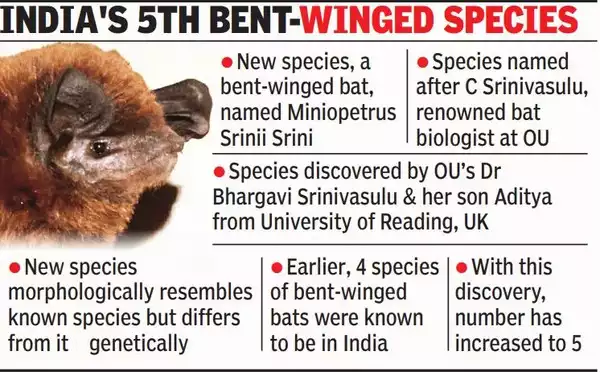
- Kerala recorded the highest number of animal discoveries, with 74 completely new species and 27 new records. It was followed by West Bengal (72 new species), and Tamil Nadu (64).
- Invertebrates accounted for the majority of new faunal discoveries with 564 new species, while vertebrates constituted 77 species.
- Insects (with 369 species) comprised the largest group among invertebrates, and fish (with 47 species) dominated among vertebrates.
- It was followed by Reptiles, Amphibia, Mammals and least with Aves.
- Capra Himalayensis, which proves that the Himalayan Ibex, distributed in the trans-Himalayan ranges of Jammu and Kashmir, Ladakh and Himachal Pradesh, is a distinct species from the Siberian Ibex.
Note
- Vertebrates: Animals with a backbone/spine, well-developed internal skeleton, distinct head with a brain, bilateral symmetry, and complex internal organs. Examples: mammals, birds, and reptiles.
- Invertebrates: Animals without a backbone/spine, typically have an exoskeleton or soft body varying body plans, and simpler internal organ systems. Examples: insects, worms, jellyfish.
- Floral Discoveries: In 2023, India also added 339 taxa to its plant database, including 326 species, and 13 infraspecific taxa. Of these, 171 taxa are new and 168 taxa are new distributional records from India.
- Taxa can refer to a sub-species or variety of plant species.
- West Bengal (52 new taxa) recorded the highest number of new plant discoveries, followed by Kerala and Uttarakhand.
- The discovery includes 106 angiosperms, 2 Pteridophytes, 16 Bryophytes, 44 lichens, 111 fungi, 50 algae and 10 microbes.
- New discoveries include wild relatives of many potential horticultural, agricultural, medicinal, and ornamental plants like begonias, impatiens, legumes, zingibers, and orchids.
- Western Ghats and North Eastern Regions were the hotspot regions contributing to 14% of total discoveries,
- New Plant Discoveries:
Animal Taxonomy Summit-2024
- The Zoological Survey of India (ZSI) organised the Animal Taxonomy Summit 2024 from June 30th to July 3rd 2024, in Kolkata, marking the institution's 109th anniversary.
- This summit brought together approximately 350 delegates from four countries, including renowned participants from the Natural History Museum in London.
- Over the three-day event, experts engaged in in-depth discussions across three broad themes:
- Taxonomy, Systematics, and Evolution
-
Ecology and Animal Behaviour
-
Biodiversity and Conservation
- The summit's deliberations aimed to advance the understanding and application of these crucial fields.
- Launch of “Fauna of India Checklist Portal”:
- It was launched at this summit as a first-of-its-kind global portal documenting all animal species in India.
- The 'Fauna of India Checklist Portal' is a first-of-its-kind exhaustive checklist comprising 121 checklists covering 36 phyla and 1,04,561 animal species found across India.
- This includes information on endemic, threatened and scheduled species accounting for 6.6% of global faunal diversity.
Zoological Survey of India
- ZSI is also a subordinate organization of the MoEFCC and was established in 1916 as a national center for the faunistic survey and exploration of the resources leading to the advancement of knowledge on the exceptionally rich faunal diversity of the country.
- It has its headquarters at Kolkata and 16 regional stations located in different geographic locations of the country.
Botanical Survey of India
- It was established in 1890 as an apex research organisation under the Ministry of Environment and Forests (MoEFCC) for carrying out taxonomic and floristic studies on wild plant resources of the country.
- It has 9 regional circles situated at different regions of the country. However the headquarter is in Kolkata, West Bengal.
Read more: Additions to India's Faunal and Floral Databases
|
Drishti Mains Question: Discuss the various threats to biodiversity and examine the role of international agreements and national policies in promoting biodiversity conservation in India. |
UPSC Civil Services Examination, Previous Year Questions (PYQs)
Prelims
Q. Recently, our scientists have discovered a new and distinct species of banana plant which attains a height of about 11 meters and has orange coloured fruit pulp. In which part of India has it been discovered? (2016)
(a) Andaman Islands
(b) Anaimalai Forests
(c) Maikala Hills
(d) Tropical rain forests of northeast
Ans: (a)
Q. Biodiversity forms the basis for human existence in the following ways: (2011)
- Soil formation
- Prevention of soil erosion
- Recycling of waste
- Pollination of crops
Select the correct answer using the codes given below:
(a) 1, 2 and 3 only
(b) 2, 3 and 4 only
(c) 1 and 4 only
(d) 1, 2, 3 and 4
Ans: (d)
Mains
Q. How does biodiversity vary in India? How is the Biological Diversity Act,2002 helpful in the conservation of flora and fauna? (2018)
Project Nexus of BIS
Why in News?
Recently, the Reserve Bank of India (RBI) has joined Project Nexus, a multilateral international initiative to enable instant cross-border retail payments by interlinking domestic Fast Payments Systems (FPSs).
What is Project Nexus?
- About:
- Project Nexus is conceptualised by the Innovation Hub of the Bank for International Settlements (BIS).
- It seeks to enhance cross-border payments by connecting multiple global domestic instant payment systems (IPS).
- It is the first BIS Innovation Hub project in the payments area to move towards live implementation.
- Members:
- Project Nexus aims to connect the FPSs of four Association of Southeast Asian Nations (ASEAN) namely, Malaysia, Philippines, Singapore, Thailand, and India, who would be the founding members and first mover countries of this platform.
- Indonesia will also join the platform in the future.
- An agreement on this was signed by the BIS and the central banks of the founding countries in Basel, Switzerland.
- Project Nexus aims to connect the FPSs of four Association of Southeast Asian Nations (ASEAN) namely, Malaysia, Philippines, Singapore, Thailand, and India, who would be the founding members and first mover countries of this platform.
- Benefits:
- Project Nexus aims to streamline how IPS connect globally, eliminating the need for custom connections with each new country by centralising connections through a single platform.
- This single connection allows a fast payment system to reach all other countries on the network.
- According to BIS, connecting IPS can enable cross-border payments from sender to recipient within 60 seconds (in most cases).
- While India and its partner countries continue to benefit through bilateral connectivity of FPS, a multilateral approach will provide further impetus to the RBI’s efforts in expanding the international reach of Indian payment systems.
- The Reserve Bank of India has been collaborating bilaterally with various countries to link India’s Fast Payments System (FPS) UPI, with their respective FPSs for cross-border Person to Person (P2P) and Person to Merchant (P2M) payments. For example, Bhutan , UAE, France, Sri Lanka, Mauritius.
Bank for International Settlements (BIS)
- Established in 1930, the BIS is owned by 63 central banks, representing countries from around the world that together account for about 95% of world GDP.
- Its head office is in Basel, Switzerland and it has two representative offices (Hong Kong SAR and Mexico City), as well as Innovation Hub Centres around the world.
- Innovation BIS 2025, is its medium-term strategy that leverages technology and new collaboration channels to serve the central banking community in the fast-changing world.
- The Basel Banking Accords are global rules set by the Basel Committee on Banking Supervision (BCBS), operating under the Bank for International Settlements (BIS) in Basel, Switzerland, providing guidelines for best practices in banking.
- It provides central banks with:
- a forum for dialogue and broad international cooperation
- a platform for responsible innovation and knowledge-sharing
- in-depth analysis and insights on core policy issues
- sound and competitive financial services
Read More: UPI Goes Global from Eiffel Tower, UPI Services in Sri Lanka and Mauritius,
UPSC Civil Services Examination, Previous Year Question (PYQ)
Prelims
Q1. With reference to digital payments, consider the following statements: (2018)
- BHIM app allows the user to transfer money to anyone with a UPI-enabled bank account.
- While a chip-pin debit card has four factors of authentication, BHIM app has only two factors of authentication.
Which of the statements given above is/are correct?
(a) 1 only
(b) 2 only
(c) Both 1 and 2
(d) Neither 1 nor 2
Ans: (a)
Q2. Which of the following is a most likely consequence of implementing the ‘Unified Payments Interface (UPI)’? (2017)
(a) Mobile wallets will not be necessary for online payments.
(b) Digital currency will totally replace the physical currency in about two decades.
(c) FDI inflows will drastically increase.
(d) Direct transfer of subsidies to poor people will become very effective.
Ans: (a)
Q3. Consider the following statements: (2017)
- National Payments Corporation of India (NPCI) helps in promoting the financial inclusion in the country.
- NPCI has launched RuPay, a card payment scheme.
Which of the statements given above is/are correct?
(a) 1 only
(b) 2 only
(c) Both 1 and 2
(d) Neither 1 nor 2
Ans: (c)
Uncertainty Regarding India’s Next National Census
Why in News?
Recently, the deadline to freeze administrative boundaries for the Census expired without a new date announced. Thus, creating uncertainty around the timing of the Census exercise.
What are the Recent Updates Regarding the Census Exercise in India?
- Deadline Extensions: The deadline for freezing administrative boundaries necessary for the Census has been extended nine times since December 2020.
- Impact of Recent Extensions:
- On Census Timeline:
- This extension effectively postpones the commencement of the Census to at least 1st October 2024 as it typically takes three months to prepare enumerators for the task. This lack of clarity adds to the uncertainty surrounding the Census schedule.
- On Women's Reservation Act:
- The implementation of the women's reservation, which reserves 33% of seats in Parliament and State Assemblies for women, hinges on the completion of the Census and subsequent delimitation exercises.
- Delimitation based on the new Census data is necessary before the reservation can be enacted.
- On Census Timeline:
- Additional Considerations:
- Few political parties has demanded the inclusion of a caste census in the upcoming Census exercise. This demand underscores broader discussions on social categorisation and representation within Indian society.
What is the Census?
- Historical Context and Frequency:
- India's first synchronised census occurred in 1881 under W.C. Plowden, the then Census Commissioner of India. Since then, it has been conducted every decade without interruption.
- While the Census of India Act of 1948 provides the legal framework, it doesn't specify a mandatory frequency.
-
The decennial pattern is a convention rather than a constitutional requirement.
- The Office of the Registrar General and Census Commissioner of India, operating under the Ministry of Home Affairs, oversees the responsibility of conducting this decadal enumeration exercise.
-
- Objective:
-
The Census provides a snapshot of the nation's population, serving as a foundation for reviewing progress, evaluating government schemes, and planning future initiatives.
-
- Methodology: The Census is conducted in two main phases:
- Houselisting/Housing Census: This initial phase records details of all structures, including their type, amenities, and assets.
- Population Enumeration: This more comprehensive phase collects detailed information about each individual in the country, regardless of nationality.
- Global Perspective:
- While India follows a 10-year cycle, similar to countries like the US and UK, some nations like Australia, Canada, and Japan conduct their censuses every five years.
Census Data 2011
- Population: Grew by 17.7% to 1.21 billion, with female growth outpacing male growth.
- Literacy: Rose to 73%, with women's literacy improving more than men's.
- Population Density: Increased to 382 people per square kilometer.
- Sex Ratio: Improved to 940 females per 1000 males.
- Religious Demographics: Hindus at 79.8%, Muslims at 14.23% of population.
- New Category: "No religion" option introduced, with 0.24% identifying as such.
UPSC Civil Services Examination, Previous Year Question (PYQ)
Prelims
Q. Consider the following statements: (2009)
- Between Census 1951 and Census 2001, the density of the population of India has increased more than three times.
- Between Census 1951 and Census 2001, the annual growth rate (exponential) of the population of India has doubled.
Which of the statements given above is/are correct?
(a) 1 only
(b) 2 only
(c) Both 1 and 2
(d) Neither 1 nor 2
Ans: (d)
Mains:
Q. Two parallel run schemes of the Government, vizthe Adhaar Card and NPR, one as voluntary and the other as compulsory, have led to debates at national levels and also litigations. On merits, discuss whether or not both schemes need run concurrently. Analyse the potential of the schemesto achieve developmental benefits and equitable growth. (2014)
Committee to Revise Base Year
Recently, a committee to oversee the revision of the base year for national accounts has been set up by the Ministry of Statistics and Programme Implementation (MoSPI).
- This 26-member committee will be chaired by Biswantah Goldar and will recommend a new base year for national accounts, potentially aligning it with indices like the Wholesale Price Index, Producer Price Index, and Consumer Price Index.
- At present base year is 2011-12 but it is proposed for revision to 2020-21.
- This initiative aims to enhance the accuracy of economic analysis and policy formulation by reviewing existing databases and incorporating new data sources.
- In India, the base year of the GDP series was revised from 2004-05 to 2011-12 in 2015 after adaptation of the sources and methods in line with the United Nations System of National Accounts (SNA) of 2008.
- The SNA is the internationally agreed standard set of recommendations on how to compile measures of economic activity.
Read more: Base Year for GDP Calculations
Araku Coffee
Recently, the Prime Minister praised the unique flavour and significance of Araku Coffee of Andhra Pradesh during his recent episode of 'Mann Ki Baat' radio programme.
- Araku Coffee is grown in the Araku Valley in Alluri SitaRam Raju district of Andhra Pradesh, located in the Eastern Ghats.
- This coffee has a distinct flavour with notes of chocolate, caramel, and subtle fruity acidity.
- It is grown in a diverse agroforestry system, primarily cultivated using organic farming methods.
- It is grown by tribal farmers and cooperatives and helps in promoting sustainable livelihoods and community empowerment.
- Araku Coffee has received international awards, including the "Best Robusta" at the Café de Colombia Competition.
- It received a Geographical Indication (GI) Tag in 2019 for unique qualities.
- Other Indian coffees that received GI Tag include Coorg Arabica, Wayanad Robusta, Chikmagalur Arabica, Bababudangiris Arabica from Karnataka, and Monsooned Malabar Robusta from Kerala.
- Top 3 Producers of Coffee: Brazil, Vietnam and Columbia.
- India is the 6th largest producer of Coffee in the World.
- Top 3 Producers of Coffee in India: Karnataka, Kerala and Tamil Nadu.
Read more: India’s Coffee, World Coffee Conference 2023
National Statistics Day
Recently, National Statistics Day was celebrated on 29th June 2024 marking the birth anniversary of Professor Prasanta Chandra Mahalanobis, a renowned Indian statistician and applied scientist.
- The theme for Statistics Day 2024 is "Use of Data for Decision-Making".
- This day has been celebrated since 2007 to create public awareness of the role and importance of statistics in socio-economic planning and policy formulation for the development of the country.
- The e-Sankhyiki data portal and Central Data Repository were launched on this day.
- Prasanta Chandra Mahalanobis was known for pioneering the Mahalanobis distance and statistical measure.
- He was a member of India’s inaugural Planning Commission and was instrumental in establishing the Indian Statistical Institute (ISI) in 1931.
- He was honoured with the Padma Vibhushan for his contribution to science.
- World Statistics Day is celebrated by the United Nations every 5 years on 20th October.
Read more: National Statistics Day, Mahalanobis's Approach: Addressing India's Big Data and AI Challenges
Front Running and Insider Trading
Recently, a mutual fund in India has been under investigation by the Securities and Exchange Board of India (SEBI) for suspected front-running.
- Front-running or tailgating is an illegal practice under the Securities and Exchange Board of India (Mutual Funds) Regulations, 1996 where fund managers place their orders ahead of large trades to profit from expected price changes.
- This occurs when someone (an insider or broker) trades ahead of others using privileged information.
- Insider trading occurs when someone with a vested interest in a company uses non-public information to make a trading decision.
- Insider trading usually involves company executives or employees leveraging confidential company information to gain an advantage in the stock market.
- On the other hand, front-running typically involves brokers or fund managers exploiting knowledge of their clients' upcoming trades.
- In India, insider trading is prohibited under the SEBI Act, 1992. SEBI has established the SEBI (Prohibition of Insider Trading) Regulations, 2015, which outline the rules for prohibiting and restricting insider trading.
- These practices undermine investor confidence in the fairness and transparency of financial markets.


